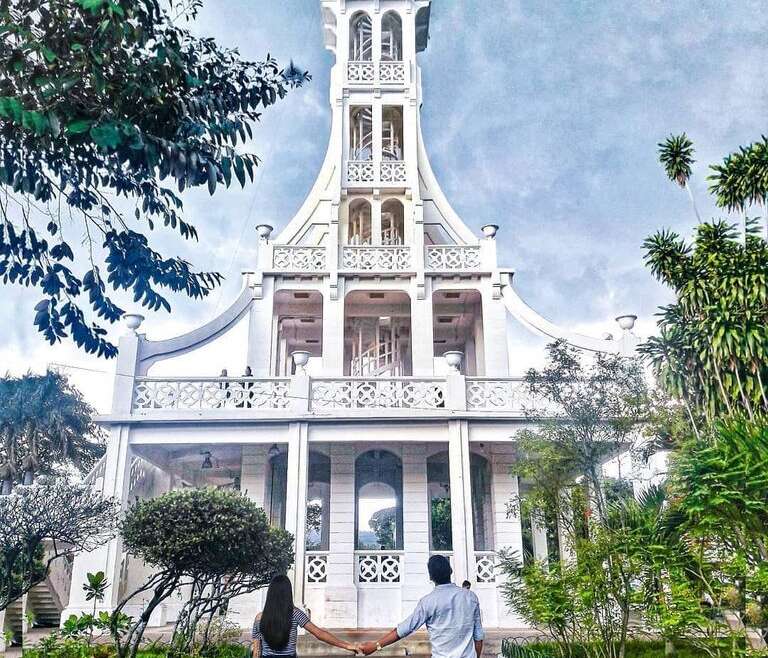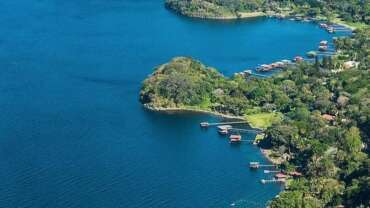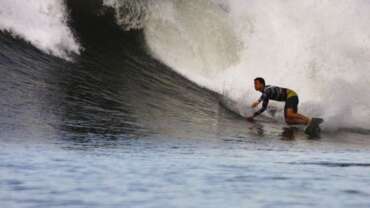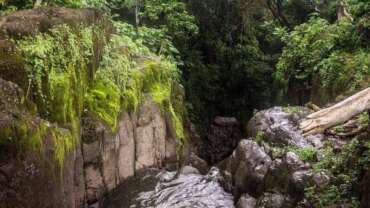Joya de Cerén
The Joya de Cerén archaeological site is located in the Zapotitán Valley. After its accidental discovery in 1976, multidisciplinary research teams of archaeologists, paleobotanists, biologists, geologists, and vulcanologists have studied the area. This exceptionally well-conserved site offers a unique account of the volcanic eruption that covered a Mayan village in the Late Classical period, from AD 600 to AD 900.
The most significant eruption was the Ilopango caldera volcano that affected western and central El Salvador and covered the village of Joya de Cerén sometime around the year AD 600. The site was inhabited only for another 30 years before it was buried by the Loma Caldera volcanic eruption in AD 630.
The successive layers of volcanic material offer a time capsule and perfect accounting of the daily activities that occurred at Joya de Cerén, how the village was organized, and the architectural complexity of its earthen structures, a frozen testimony left behind as the residents fled. Joya de Cerén gives visitors a glimpse into the daily routines of farmers and artisans, making it an iconic Mayan archaeological site in Mesoamerica and for the world, declared a UNESCO World Heritage Site in 1993.
Visitors to Joya de Cerén can visit the museum and tour the excavated areas of the village.
Guazapa Volcano
Geographical formation of up to 1436 meters above sea level and 22 km. Enjoy hiking, walking or horseback riding, war caves (tatús), viewpoints and canopy, it tells stories of the armed conflict.
Casa Blanca Archeological Site
Casa Blanca is one of the Chalchuapa sites, settled principally in the Late Preclassical period, from around 400 BC to AD 250. Casa Blanca and the Trapiche site to its north are believed to have been important Mayan estates at the time. Both Casa Blanca and Tazumal were inhabited in the Classical and Post-Classical periods. Of particular importance in this site are the sculptures associated with the structures, including figures and effigies with human and animal faces. Flat stelae and altars for important events on the calendar have also been found.
The park currently covers nearly 6 hectares, with archaeological trails to visit the 6 structures that have been researched and partially restored thus far (3 pyramids and 3 smaller structures). An inset archaeological window describes the sequence of human habitation in the area, and a museum and indigo workshop give visitors a chance to learn about the process of cultivation, production, and use of this Mesoamerican dye.
Tazumal Archeological Site
The Tazumal site is located in the Chalchuapa valley and archeological area, covering approximately 5 km² and including locations such as Las Victorias, El Trapiche, Casa Blanca, Cuscachapa, and Nuevo Tazumal. Tazumal was already a significant site by the year AD 200, and materials excavated from the area reveal important linkages between Tazumal and southeastern Mesoamerica.
The peak period came from AD 650 to AD 850, as the site strengthened its administrative and cultural ties to the city of Copán. The discovery of a stele and rich offerings at the tombs of governors and ruling families replete with jade, gold and copper alloys, cinnabar, Copador ceramics, pyrite mirrors, bottles for tobacco, and ceremonial axes are a testimony to the power that the site once wielded. A recent reading of a Mayan text on a perfume bottle directly links a leader from Tazumal with rulers in the Kingdom of Copán. Together, these objects demonstrate the political and commercial influence of the Mayan lowland cities.
After the collapse of the Mayans, waves of Pipil migration would flow into Chalchuapa. From AD 900 to AD 1200, Tazumal became an important ceremonial center, incorporating diverse architectural styles, ceramics, and tools from Mexico, and venerating deities from the Mexica pantheon such as Xipe Totec, Tlaloc, and Quetzalcoatl.
There is a museum on the Tazumal site, and trails to the different structures, including a ball-game court and ancient constructions that recount the long history of habitation on the site.
San Andrés Archeological Site
San Andrés was an important site during the Late Pre-Classical period, from 400 BC to AD 25. In the Late Classical period, AD 600 to AD 900, the site was considered a main regional Mayan hub that oversaw the lesser settlements of the Zapotitán Valley. In this period, San Andrés maintained strong ties with the Kingdom of Copán, whose cultural and political influence spread across western and central El Salvador, evidenced by offerings of flint scepters, Copador ceramics, and jars with Mayan text. The original footprint of this monumental location was likely around 200 hectares, and it is surrounded by 350 archaeological sites, including Joya de Cerén. The total population of the Zapotitán Valley in the Late Classical period likely ranged from 40,000 to 100,000 people.
A monument known as the acropolis sits at the heart of San Andrés: an elevated surface built with clear architectural influences from the outlying Mayan areas. The acropolis is surrounded by terraces and market plazas; rooms and residence structures for the noble families are located closer to the temples. Communities of Mayan artisans such as Joya de Cerén also dot the area. These settlements specialized in ceramics, obsidian, jades, and pigments made from cinnabar (mercury oxide) and hematite (iron oxide).
There was also an important settlement in San Andrés in the colonial period, as revealed by the indigo pit for dye extraction that was in use in the 17th century (1650-1660), on one of the Dominican Estates in San Salvador. The San Andrés archaeological site has a local museum, shops, and an amphitheater for visitors to explore.
Cihuatán Archaeological Site
The Cihuatán archaeological site in the Acelhuate River Central Valley sits on a crest some 30 meters high as a strategic vantage point over the valley.
Around AD 900, the hilltop was modified by the inhabitants of Cihuatán to serve as the town center. The walled contours of the ceremonial center surround a central plaza. Constructions in the center include an enormous royal palace for the old city, with two smaller mansions. The design concepts for the royal palace hail from the “tecpan” from central Mexico. The colossal center in Cihuatán was surrounded by an expansive area of common residences, perhaps up to 5,000 homes.
Cihuatán can be divided into three important areas: its ceremonial center, the acropolis plaza, and the residential area. Two ball-game courts were erected, one at the western edge and one to the north. The inhabitants of Cihuatán venerated different deities from the Mexica pantheon, such as Quetzalcoatl, Tlaloc, and Xipe Totec. Cihuatán was vacated from AD 1050 to AD 1100, likely as a product of war and conflict. 21st-century archaeological studies suggest that the city was razed.
Cihuatán and the Las Marías site are the largest archaeological sites identified in the country so far. Trails run through the Cihuatán park to the excavated area, with 28 researched structures, a site interpretation center for visitors, a gift shop, and a cafeteria.








